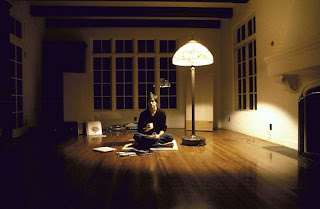The Zen of Minimalism in Interior Design: Finding Peace in Simplicity
In a world where we are constantly bombarded with information, stimuli, and clutter, there is an undeniable allure to simplicity and minimalism. This holds particularly true in the realm of interior design, where the philosophy of "less is more" has given birth to a timeless and tranquil aesthetic: Zen minimalism.
Zen minimalism is not just a design style; it's a way of life. Rooted in the principles of Zen Buddhism, this interior design philosophy prioritizes simplicity, serenity, and mindfulness. It's about creating spaces that foster a sense of calm, clarity, and balance. In this article, we'll explore the key principles of Zen minimalism in interior design and how it can help you find peace in your living spaces.
Embrace the Essential
The core tenet of Zen minimalism is the idea of embracing the essential and eliminating the superfluous. When designing your space, focus on the things that truly matter and bring you joy. It's not about depriving yourself, but rather curating your environment to showcase the elements that resonate with your soul. This often means decluttering your space and ridding it of unnecessary items.
Less is More
Zen minimalism encourages us to let go of excess. This doesn't mean sacrificing comfort or functionality; it means choosing quality over quantity. Select a few well-crafted, meaningful pieces of furniture and decor over numerous trinkets and gadgets. Simplify your color palette, opting for natural tones, which evoke a sense of calm and harmony.
Open Space and Flow
A key component of Zen minimalism is creating open and flowing spaces. This can be achieved through thoughtful furniture placement, using light, low-profile furnishings, and incorporating design elements that encourage movement and interaction. When spaces are open and uncluttered, the mind follows suit, experiencing a sense of liberation and peace.
Mindful Arrangement
Each element in a Zen minimalistic space should be thoughtfully placed and hold a specific purpose. Furniture and decor should not be randomly scattered but strategically positioned to create balance and harmony. This includes considering the flow of energy or "chi" in the room, which can be optimized through the careful arrangement of objects.
Natural Materials
The use of natural materials, such as wood, stone, and bamboo, is a hallmark of Zen minimalism. These materials evoke a connection to the earth, bringing the outside world in and grounding the space. They also contribute to a feeling of warmth and authenticity.
Light and Air
Ample natural light and good air circulation are integral to Zen minimalism. Large windows, light curtains, and a fresh breeze can breathe life into a room. This focus on the elements helps maintain a balanced and calming atmosphere.
Multi-Purpose Design
To maximize the functionality of your space, consider multi-purpose design. This involves selecting furniture and decor that can serve more than one function. For example, a sofa bed, wall-mounted shelves, or a dining table that doubles as a desk. This not only saves space but also simplifies your life.
Declutter the Mind
Zen minimalism isn't just about the physical space but also the mental space. By decluttering your environment, you create a sense of mental clarity and tranquility. Letting go of unnecessary possessions can help release emotional baggage, creating a space for inner peace.
In a world full of distractions, finding solace in the Zen of minimalism in interior design can be a transformative experience. It offers a way to create an environment that encourages mindfulness, balance, and peace. By stripping away the excess and focusing on the essential, you can cultivate a sanctuary that nurtures your spirit and provides respite from the chaos of the outside world. In the words of Antoine de Saint-Exupéry, "Perfection is achieved, not when there is nothing more to add, but when there is nothing left to take away." Zen minimalism is a journey towards this ideal, where simplicity becomes synonymous with serenity.


Comments
Post a Comment